Photographs: Courtesy, Infosys Itika Sharma Punit in Bangalore
Since August 2011, the company has not only lost out to closest peer Cognizant but also increased the gap with larger competitor TCS.
Infosys, once considered the bellwether of India’s export-driven software sector, is yet to return to a consistent growth path even as one of its founding members, now serving as chief executive officer (CEO), is to retire by January 2015.
The company has shown some signs of revival but it might be too early to assume that all is well with the Bangalore-based firm.
Since August 2011, when then chief operating officer S D Shibulal was promoted as CEO, Infosys has not only lost to closest peer Cognizant Technology Solutions but increased the gap with larger competitor Tata Consultancy Services.
Despite earnest efforts to bring back growth, the company has continued to disappoint investors - losing market share and profitability.
…
Who is to be blamed for Infosys' poor performance?
Photographs: Reuters
Additionally, Infosys kept missing its earnings guidance quarter-after-quarter, leading investors and analysts to rip the company of its ‘bellwether’ status.
According to a report by analyst firm Gartner, Infosys’ growth in calendar year (CY) 2012 was the slowest among most of the offshore-centric IT services companies, which have a similar model of operations.
Infosys logged a revenue growth of only 6.6 per cent in CY2012, even lower than Bangalore-based Wipro, which reported 7.6 per cent in the same period. In contrast, Cognizant reported industry-leading revenue growth of 20.1 per cent, followed by HCL Technologies at 18.1 and TCS at 15.2 per cent.
While many claimed the poor performance through these 10 quarters was due to tough market conditions, others debate if the company had lost its focus at a time when its peers were competitively forging ahead.
…
Who is to be blamed for Infosys' poor performance?
Image: N R Narayana MurthyPhotographs: Rajesh Karkera/Rediff.com
The blame for this lost focus is often put on the company’s ‘Infosys 3.0’ strategy, which was conceptualised and closely led by Shibulal.
In 2011, the company drew a road map under this strategy for “building tomorrow’s enterprise”, with a goal, of an “improved portfolio of business that will ensure high-quality, industry-leading growth, enhanced revenue productivity and relatively higher margins”.
Even as most observers complimented Infosys for foresightedness and endeavours to rise up the value chain, there was a general belief that the initiative was wrongly-timed.
“When they started the journey, the business environment was good. But as they progressed, the environment became volatile and clients started pulling out from focus areas such as consulting and systems integration,” said a Mumbai-based analyst, who did not wish to be named.
“Additionally, the problem got aggravated when Infosys lost focus on their core job, like BPO (business process outsourcing) and infrastructure management services,” he added.
…
Who is to be blamed for Infosys' poor performance?
Image: Infosys CEO ShibulalPhotographs: Reuters
According to this analyst, Infosys’ performance was below market expectations for five of the 10 quarters for which Shibulal was CEO.
Amid deteriorating financial performance and with employee morale at an all-time low, in June 2013 the Infosys board invited co-founder N R Narayana Murthy to come back. This, according to experts, was the lowest point in Shibulal’s tenure as CEO.
“One of the big weaknesses of Shibulal is that he is a great executor but probably could not communicate,” T R Madan Mohan, managing partner of management consulting firm Browne & Mohan had told Business Standard in an earlier interview.
As he sets to depart the company after serving it for the most part since its inception, the soft-spoken Shibulal might not be leaving with his head held as high.
…
Who is to be blamed for Infosys' poor performance?
Image: B G SrinivasPhotographs: Courtesy, Infosys
Internal front runners for Infosys’ CEO post
B G SRINIVAS: The soft-spoken communicator
B G Srinivas first came to the limelight in 2012, when Infosys decided to swap his manufacturing portfolio with former executive council member Ashok Vemuri’s banking, financial services and insurance.
Srinivas had been heading manufacturing at Infosys since 2007. Experts believed Infosys was giving Srinivas exposure across businesses before taking up the top job.
After the resignation of other two CEO contenders - V Balakrishnan and Ashok Vemuri - experts pronounced Srinivas to be the next CEO.
However, these beliefs were diluted when the company appointed U B Pravin Rao along with Srinivas as presidents.
Srinivas currently heads the key portfolios of financial services, insurance, manufacturing, engineering services, energy and communications, public services, Infosys Lodestone, strategic global sourcing, marketing and alliances
…
Who is to be blamed for Infosys' poor performance?
Image: U B Pravin Rao.Photographs: Courtesy, Infosys
U B PRAVIN RAO: Quintessentially Infosys
U B Pravin Rao joined Infosys in 1986 after completing his engineering degree and has held various roles in these 28 years.
He headed infrastructure management services, Europe delivery and retail, consumer packaged goods, logistics & life sciences verticals in the past.
Rao’s appointment as president in January this year surprised observers, as some of his colleagues were considered new stars at Infosys.
An electrical engineer from BangaloreUniversity, Rao is now responsible for driving growth across businesses. He is also director of Infosys Leadership Institute, responsible for selection, development, research and succession of senior leaders in the company

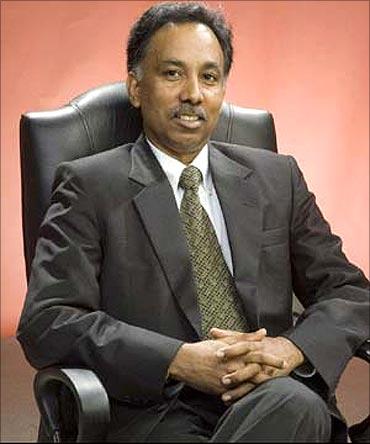
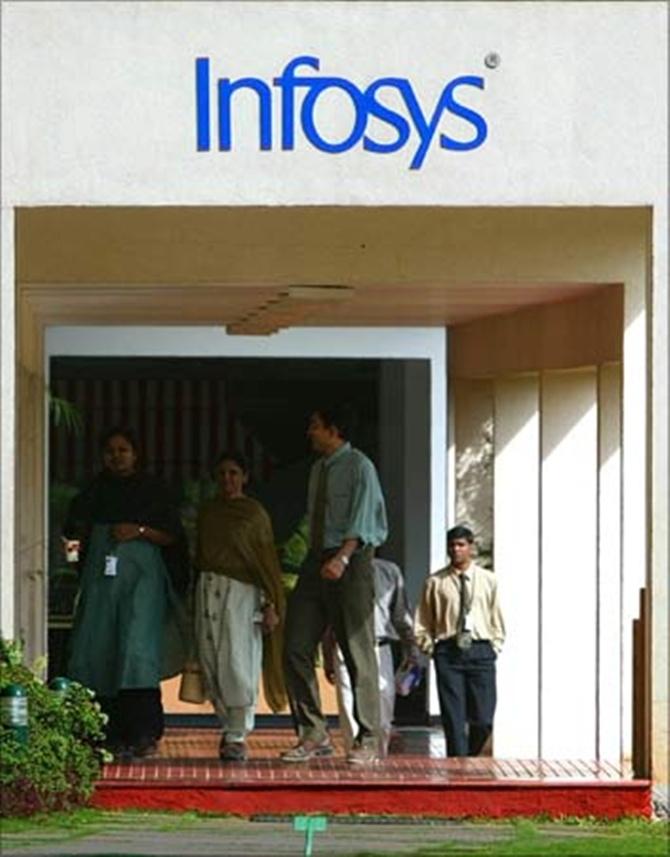

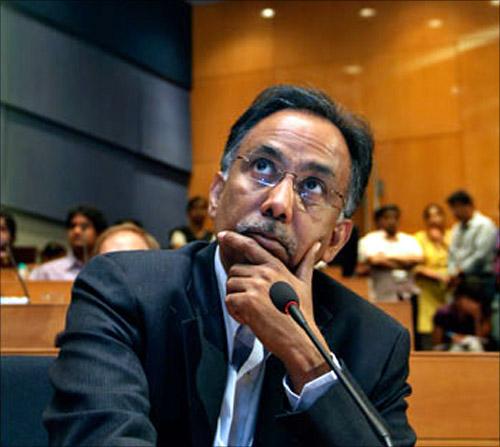
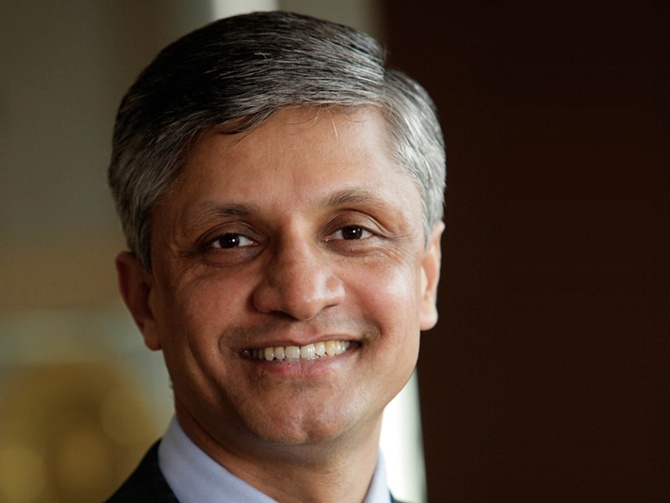
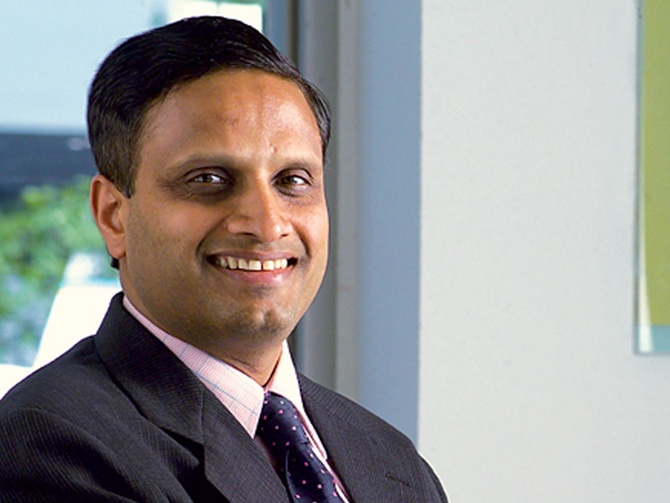

article